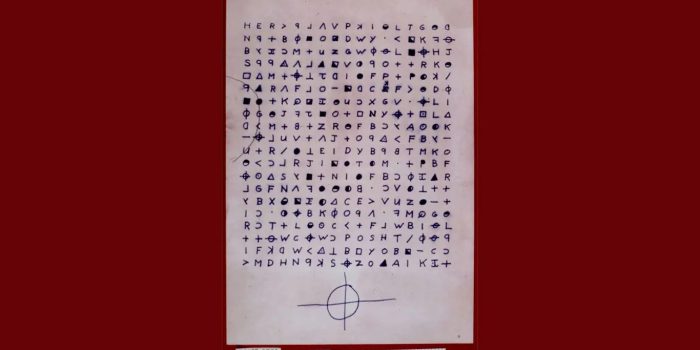The recent unveiling of a whitepaper by an international consortium of cryptographers sheds light on the exhaustive undertaking required to unravel a message linked to the notorious Zodiac Killer. Active in Northern California during 1968 and 1969, the enigmatic figure left a legacy of unsolved murders and encrypted communiqués dispatched to local newspapers.
The 340-character cipher, known as “Z340,” first published in newspapers on November 12, 1969, emerged as the most notorious among the encrypted messages. Despite sustained efforts by amateurs and experts over several decades, the cipher defied decryption until December 2020. It was then that the international team triumphantly announced their breakthrough. This significant achievement, validated by subsequent FBI examination, ultimately resolved a 51-year-old mystery, providing closure at last.
“I HOPE YOU ARE HAVING LOTS OF FUN IN TRYING TO CATCH ME,” the Zodiac Killer’s Z340 message begins, before clarifying he did not make the famous A.M. San Francisco television call-in on October 22, 1969.

The whitepaper, recently highlighted by 404 Media, provides a comprehensive account of the intricate history behind Z340. According to the authors, the decryption process involved years of experimentation, failed attempts, and the synthesis of existing knowledge about the Zodiac Killer. The team’s confidence in their approach grew as they recognized elements of homophonic substitution and transposition within the cipher.
To tackle the daunting task of decrypting Z340, the team developed and employed AZDecrypt, a specialized program designed by one of the team members, Jarl Van Eycke. This program, capable of deciphering up to 200 homophonic substitution ciphers per second with 99% accuracy, was augmented to incorporate transposition options. Through meticulous analysis and adaptation, AZDecrypt eventually led the team to their breakthrough.
Interestingly, the authors speculate that the difficulty of Z340 may have been unintentional on the part of the Zodiac Killer, suggesting that the computational power required to decipher it was likely not available in 1969. They posit that while the Zodiac may have intended to create a challenging cipher, he may have inadvertently made it too complex.

However, the whitepaper emphasizes that the decryption of Z340 was not solely the result of computational algorithms. It acknowledges the collective effort of cryptographers over decades, highlighting the collaborative nature of decrypting such a complex cipher. As the authors aptly note, “The solution of this cipher was the result of a large, multi-decade group effort, and we ultimately stood on the shoulders of many others’ excellent cryptanalytic contributions.”


